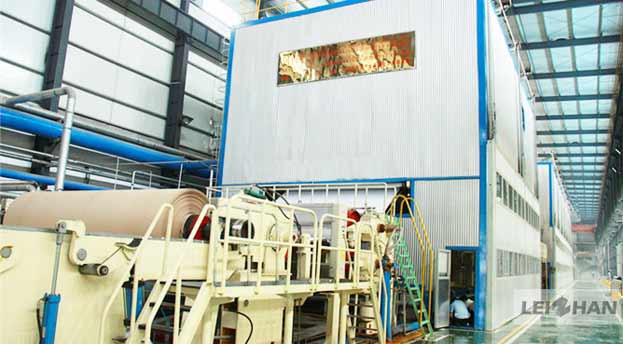Which is the most important among paper properties?
The uniformity of the paper is the degree of uniformity of the fibers in the sheet. The uniformity of the paper can be observed at light. For paper with good uniformity, the fiber distribution thickness is uniform without significant lightness and darkness. While for paper with bad uniformity, some places are transparent, and some places are dark, and there is wildness phenomenon.
The thicker the paper is, the easier it is to produce evenly uniform paper; while the thinner the paper is, the more difficult to control the evenness. The mechanical strength of even paper will decline, crack length can be reduced by 40%; folding endurance and tear resistance can be reduced by 50% to 75%.
There are many factors affecting the uniformity, such as the type of pulp, fiber shape, the degree of beating, the filling of the slurry, concentration size of the paper and the stability, paper machine net structure characteristics and so on.
The following aspects will affect the uniformity of the paper:
1. Paste network, due to the dirty net, small fibers, accessories and so on are stranded in the mesh which will affect dehydration uniformity, causing bad unevenness;
2. Dehydration of dewatering element is not uniform;
3. Net tension is too small, resulting in loosening of the net;
4. Selection of jet nit point is improper. The jet nit point is the position of the paper material injected through the headbox to the web. The general jet nit point is controlled in nearby position in the front of the organization board. If the jet nit point is too front or too back, that is, paper all fall on the tissue board, it is easy to bring into the air, also damaging evenness. Therefore, it should be chosen based on the paper structure. In addition, the slurry temperature also has an important impact on the uniformity;
5. The choice of forming net.
Welcome
Leizhan paper pulp machine are mainly about pressure screen( M.C. pressure screen, Inflow pressure screen ), Drum Pulper VS D type Hydrapulper, Bale Opener, waste paper Chain Conveyor, Pulp Pump, Vertical Hydrapulper, Light Impurity Separator, Auto-cleaning Vibrating Screen, Reject Separator, refiner equipment, etc.
Leizhan Products
- Three Wires Cardboard Paper Machine
- Tissue Paper Machine Making Machine
- 4600 Low Weight High Strength Corrugated Paper Making Machine
- 4400/350 Triple Layer Liner Cardboard Paper Machine
- 4200 High Strength Corrugated Paper Making Machine
- 3800 Five-wire Coating Board Paper Machine
- 3700 Four Layer Cardboard Paper Machine
- Double Layer Kraft Paper Machine
- Slurry Approach System for Paper Making
- Kraft Liner/Testliner Paper Machine
- Drum Pulper Following Development Trend of Paper Industry
- High-speed Pulp Washing Machine
- ZG Series Drum Pulper
- ZDSD Series D Type Hydrapulper
- ZDSG Series High Consistency Hydrapulper
- ZDS Series Vertical Hydrapulper
- ZDSZ Series M.C. Hydrapulper
- SBJ Series Bales Breaker
- ZST Series Drum Screen
- Rope Cutter
- ZNS Series Mid Consistency Pressure Screen
- NLS Series Inflow Pressure Screen
- FQJ Series Light Impurity Separator
- PZ Series Reject Separator
- ZSK Series Auto-cleaning Vibrating Screen
- ZDFD Series Single Effect Fiber Separator
- ZDF Series Single Fiber Separator
- ZSF Series Hydrapurger
- UV Series Up Flow Pressure Screen
Paper Machinery Co., LTD.
E-mail: leizhanchina@gmail.com
Tel : +86-371-5512-9198
WhatsApp: +86-13783579051


